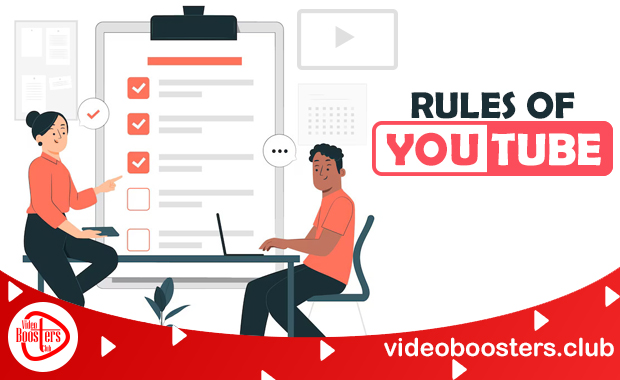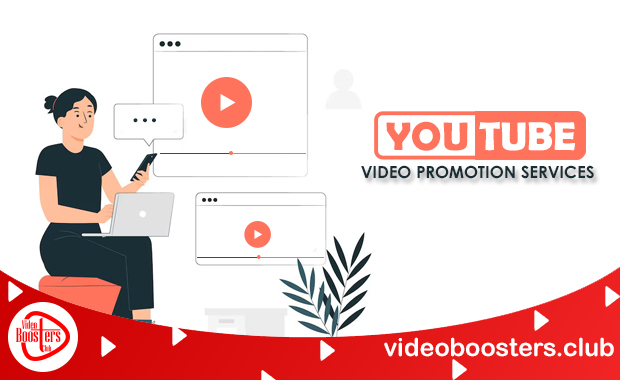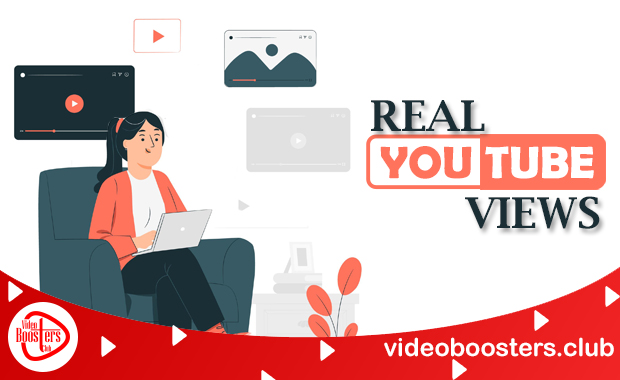
Starting a YouTube channel is easy. Growing it, however, is a completely different game. Every successful creator knows that mastering the rules of YouTube is the first step toward long-term success.
If you’re dreaming of building a large audience, earning revenue, and gaining recognition on the platform, then understanding and following the rules of YouTube is non-negotiable. These rules are more than just community guidelines—they are your roadmap to sustainable growth.
Many creators make the mistake of ignoring YouTube’s policies or violating its terms unknowingly. This can result in video takedowns, limited monetization, or even permanent bans. That’s why knowing the rules is as important as creating quality content.
In this blog, we’ll walk you through the most important rules of YouTube, explain why they matter, and show you how they can help grow your channel the right way. Whether you’re a beginner or a rising star, this guide is your key to staying compliant and thriving on YouTube.
Understand The Rules of YouTube To Grow Your Channel
To build a flourishing YouTube channel, a creator must first become a diligent student of the platform’s regulations. These rules are broadly categorized into several key areas, each playing a vital role in the health and trajectory of your channel.

1. The Foundation: YouTube’s Community Guidelines
YouTube’s Community Guidelines form the core of its platform rules. They are intended to shield the YouTube community from offensive and hazardous content. In the event that these guidelines are not adhered to, your channel may be subject to strikes, video removal, and, in the most serious cases, channel termination.
Spam and Deceptive Practices
This is a broad category that YouTube takes very seriously. It includes artificially inflating your metrics like views, likes, and subscribers through automated means or misleading viewers. A common pitfall for new creators is the “sub4sub” (subscribe for a subscribe) tactic. While it might seem like a quick way to boost numbers, the YouTube algorithm is sophisticated enough to detect this inauthentic engagement.
A 2022 study by a social media analytics firm revealed that channels engaging in such practices often see a higher churn rate of subscribers and lower overall watch time, which negatively impacts their long-term growth. Alternatively, concentrate on the development of content that organically draws and maintains an audience.
Sensitive Content
This is a critical area to understand. YouTube has strict policies against content that is sexually suggestive, contains nudity, depicts self-harm or suicide, or is excessively violent or graphic. The platform aims to be a safe space for a diverse audience, including minors.
If your content delves into sensitive topics for educational, artistic, or journalistic purposes, it’s crucial to provide context in your video and its metadata (title, description, and tags). However, gratuitous or shocking content will almost certainly lead to a Community Guidelines strike.
Hate Speech and Harassment
YouTube strives to uphold a positive and welcoming environment for all. Any content that incites hatred or violence against individuals or groups based on race, ethnicity, religion, disability, age, nationality, veteran status, sexual orientation, or gender identity is strictly not allowed.
Similarly, cyberbullying and harassment, which can include targeted insults, threats, or revealing someone’s private information, are severe violations of the rules Of YouTube.
Child Safety
YouTube places the highest importance on the safety of minors. Content that endangers or exploits children will result in immediate channel termination and may be reported to law enforcement. This includes sexually explicit content featuring minors, as well as content that depicts dangerous activities that could be imitated by children.
2. The Legal Framework: Terms of Service
When you create a YouTube channel, you agree to its Terms of Service (ToS). This is a legally binding contract that outlines your rights and responsibilities as a creator. While often overlooked, the ToS contains crucial information about content ownership, your license to YouTube, and the platform’s right to remove content or suspend accounts.
A key takeaway from the ToS is that while you own the content you create, you grant YouTube a worldwide, non-exclusive, royalty-free license to use, reproduce, distribute, and display it in connection with their service.
3. The Monetization Maze: YouTube Partner Program (YPP) Policies
For many creators, YouTube monetization is a primary goal. You must be part of the YouTube Partner Program (YPP) to start generating income from your videos. YouTube Partner Program requirements includes meeting key milestones, like 1,000 subscribers and 4,000 hours of watch time in the last year, Or alternatively, 10 million valid public Shorts views within the last 90 days—along with strict adherence to all YPP policies.
Advertiser-Friendly Content Guidelines
This is a significant subset of the rules of YouTube for monetized channels. Advertisers want their brands associated with positive and safe content. Therefore, YouTube has specific guidelines for what is considered “advertiser-friendly.” Content that features inappropriate language, violence, adult themes, or controversial subjects may have limited or no ads.
This is often referred to as “demonetization.” Understanding these guidelines is crucial for maintaining a steady revenue stream. According to a 2023 creator survey, over 60% of monetized channels have had at least one video flagged for not being advertiser-friendly.
AdSense Program Policies
Your YouTube earnings are paid through Google AdSense. Therefore, your channel must also comply with the AdSense Program Policies. This includes rules against invalid click activity (clicking on your own ads) and prohibitions on certain types of content.
4. The Realm of Originality: Copyright Rules
YouTube Copyright gives legal ownership to those who create original content. On YouTube, this means you cannot use someone else’s copyrighted material in your videos without their permission. This includes music, video clips, images, and even a snippet of a song.
Copyright Strikes
If a copyright owner discovers their content used in your video without permission, they may file a takedown request. This can result in a copyright strike on your channel, and accumulating three strikes may lead to your channel being permanently removed. It’s a serious offense and a common stumbling block for new creators.
Fair Use
Fair Use is a legal rule that enables limited, purposeful use of copyrighted material—such as for reviews, education, or reporting—without the need for authorization. It’s important to note that fair use is complex and interpreted differently depending on the country. Just adding a disclaimer isn’t enough to qualify for fair use—your content must be genuinely transformative.
What matters most is how significantly your content modifies the original. For instance, using a short clip to review a movie is more likely to be considered fair use than simply re-uploading a scene.
YouTube’s Content ID System
To handle copyright on a large scale, YouTube relies on its powerful Content ID system. Copyright owners can upload their content to this system, which then scans all uploaded videos for matches. If content is matched, the owner can decide to earn revenue, restrict access, or simply monitor the video’s activity. Understanding how Content ID works can help you avoid potential copyright issues.
By diligently studying and applying these core sets of rules, you create a stable foundation for your YouTube channel’s growth. It’s not about restricting creativity but about channeling it within a framework that ensures longevity and success.
Why Following the YouTube Rules is Important
Following the rules of YouTube isn’t just about avoiding strikes—it’s a smart strategy for long-term success on the platform. The benefits of playing by the rules extend far beyond simply keeping your channel active.
1. Building Trust with Your Audience and the Algorithm
When you consistently follow the guidelines, it reinforces your channel’s reliability to your audience and the algorithm. Trust and professionalism attract more subscribers and boost viewer engagement.
From an algorithmic perspective, a channel in good standing is more likely to be favored. YouTube’s algorithm is designed to maximize watch time by recommending content viewers are likely to enjoy. A channel that consistently violates the rules is seen as a risk. In contrast, a channel with a clean record is a safer bet for the algorithm to promote.
A 2024 analysis of over a million YouTube channels demonstrated a clear correlation between channels with no community guideline strikes and higher visibility in recommended and suggested video feeds.
2. Ensuring Long-Term Channel Viability and Growth
A single violation can have a cascading negative effect on your channel. A Community Guidelines strike can result in a temporary inability to upload, live stream, or post stories. Multiple strikes can lead to channel termination, erasing all your hard work in an instant. Similarly, copyright issues can lead to the loss of monetization on specific videos or your entire channel.
By following the rules of YouTube, you are investing in the long-term health of your channel. You create a stable environment for growth, free from the constant threat of sanctions. This stability allows you to focus on what truly matters: creating high-quality content and engaging with your community.
3. Unlocking Monetization and Brand Partnership Opportunities
As mentioned earlier, adherence to the YouTube Partner Program policies is a prerequisite for monetization. A channel with a history of violations will find it incredibly difficult, if not impossible, to be accepted into the YPP. Even after being monetized, repeated violations of the advertiser-friendly content guidelines will significantly impact your earnings.
Furthermore, brands are increasingly cautious about the creators they partner with. A brand’s reputation is on the line when they collaborate with a YouTuber. They will meticulously vet your channel for any controversial or rule-breaking content. A clean and compliant channel is far more attractive to potential sponsors, opening up lucrative opportunities for branded content and partnerships.
A survey conducted by a leading influencer marketing agency in 2023 found that 85% of brands consider a creator’s adherence to platform guidelines a “very important” factor in their selection process.
4. Fostering a Positive and Engaged Community
The rules of YouTube are ultimately designed to create a positive and safe environment for everyone. By following these rules, you contribute to this positive ecosystem. This, in turn, helps in building a loyal and engaged community around your channel.
When viewers feel safe and respected in your comments section and through your content, they are more likely to participate in discussions, share your videos, and become dedicated fans. This organic community growth is a powerful driver of long-term success on the platform.
Conclusion
Understanding and following the rules of YouTube is not just about avoiding penalties—it’s about creating a thriving channel built on trust, value, and consistency.
From community guidelines to copyright policies, every rule YouTube enforces is designed to maintain a safe and sustainable environment for creators and viewers alike. As we’ve seen, these rules impact everything—from monetization to visibility and audience growth.
If you’re serious about growing your channel, start with this: Read the rules. Follow them religiously. Keep learning and adapting.
Success on YouTube isn’t only about creativity—it’s also about compliance. When you combine engaging content with a clear understanding of the platform’s rules, you position yourself for long-term, exponential growth.
So, follow the rules of YouTube, and you won’t just survive—you’ll thrive.


